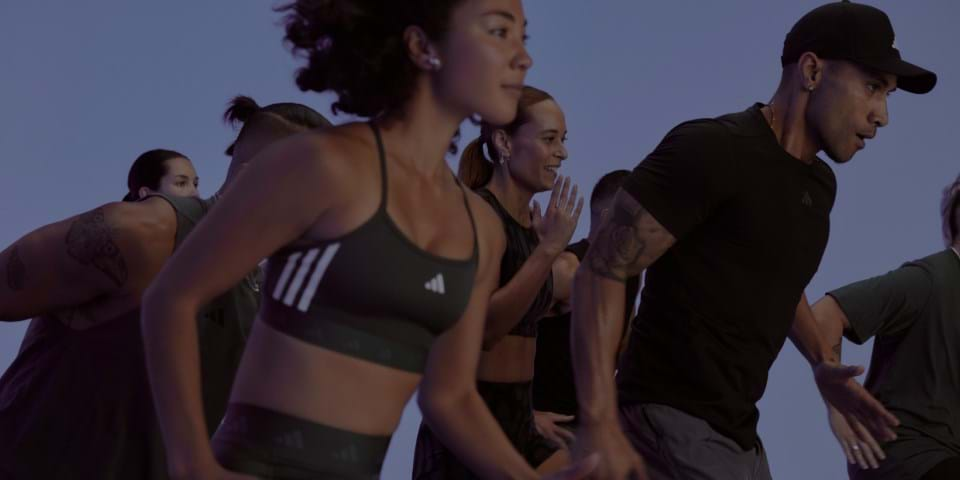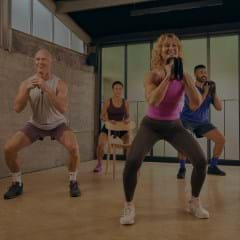Have you ever heard (or thought) any of the following …? “I’m overweight, I eat a healthy diet and I work out, but it doesn't change”, “My legs are usually very painful”, “My legs and arms look different to the rest of the body: I feel small beans under the skin.”
As a Les Mills Instructor, Personal Trainer and Nutritionist, I’ve been working with women for over 20 years and have often heard statements like the ones above. I must confess, that initially I too fell into the usual clichés, thinking that those people were not being truthful to themselves. But, you know what? I was wrong! At that time I didn't know about the existence of lipedema.
So what is lipedema?
Lipedema is a genetic disease with a mainly female incidence. It affects about 11% of the world population (and increasing) with onset in puberty, pregnancy and/or menopause.
This inflammatory, chronic, degenerative and disabling condition affects loose connective tissue and adipocytes, causing a progressive and fibrotic increase in adipose tissue. As a result, fat cells build up abnormally. Lipedema typically affects the buttocks, thighs, calves and sometimes arms. It is often accompanied by swelling (edema), systemic inflammation and pain. If neglected, it can lead to severe disabilities.
Lipedema is different from normal overweight and obesity. In addition, the adipose tissue affected by lipedema is RESISTANT to classic forms of physical exercise and dietary change.
Common lipedema symptoms
The most common symptoms are sore legs when pinched, skin that easily bruises, heaviness and/or weakness in the legs, fatigue, and smooth skin with a ‘bean bag’ feeling under it. Other symptoms are: hypermobility; frequent cold body temperature; frequent bruises; and touch sensitivity.
Are you suffering lipedema, or at risk?
If you suspect you might suffer lipedema, the first step is to seek a diagnosis from a doctor highly specialized in edema and the lymphatic system. An early diagnosis can prevent worsening! The second step is to plan a multidisciplinary approach that includes physical therapy, adapted physical activity and diet changes. Surgical options exist for severe cases.
How dietary changes can help lipedema
According to research, the most accredited nutritional treatment is a low-carbohydrate diet. In October 2023 I attended the World Lipedema Congress in Potsdam Germany where, among the nutritional approaches, the ketogenic diet was highlighted for its weight loss and pain-relieving benefits. This ketogenic diet strongly reduces carbohydrate intake, stimulating in the first instance the primary depletion of both glycogen reserves in muscle and the liver. Ketone bodies become the new source of energy. Typically, a ketogenic diet, which is normal in protein intake and really high in fat, relies on a specific distribution of macronutrients with ongoing adjustments. This is why it’s very important that you contact a specialized Nutritionist – DIY is not recommended!
Can sport or exercise ease lipedema?
Prof. Dr Alexandre Campos Moraes Amato suggests that when it comes to lipedema, anxiety and stress can be key sources of inflammation, and physical activity is the best way to reduce this.
We know that during a workout we create natural inflammation, and our body takes action to repair the damage, consequently becoming stronger and healthier. However, when dealing with lipedema, where inflammation is always present, the goal is to avoid creating more systemic stress! Despite this, there is a need to get stronger. This is because lipedema often goes hand-in-hand with a lack of strength and hypermobility, which exposes you to the risk of injuries.
So what physical activity is best?
When it comes to research into lipedema, it is still early days and a lot of new (and numerically satisfying) research still needs to be done. Studies suggest that low-intensity exercises, walking, yoga, Pilates, water exercise and elastic band training are all well-regarded ways for lipedema sufferers to improve muscle strength.
Whatever the exercise, the goal is not necessarily performance, the goal is to be consistent – a decrease in intensity and increase in frequency is generally recommended. Lipedema symptoms are cyclical and change according to the stage of the disease. What feels good for you today, could not be tolerated tomorrow. When pain and inflammation are high, reduce exercise intensity. Knowing yourself is key: know your body, know your state of wellness, and use it to measure your workout intensity.
If you want extra support, QuaSil Lipedema Questionnaire is a good tool to understand your grade of inflammation.







